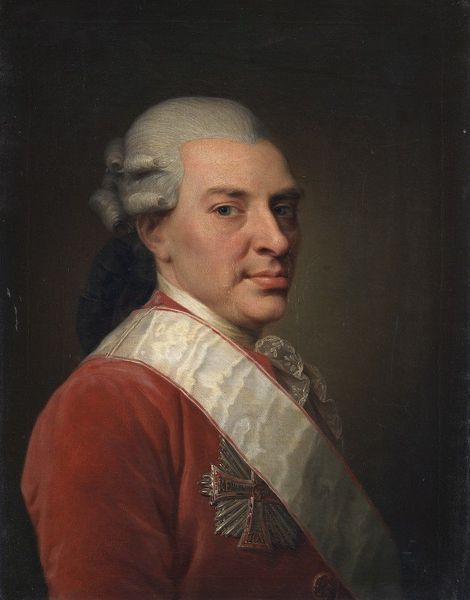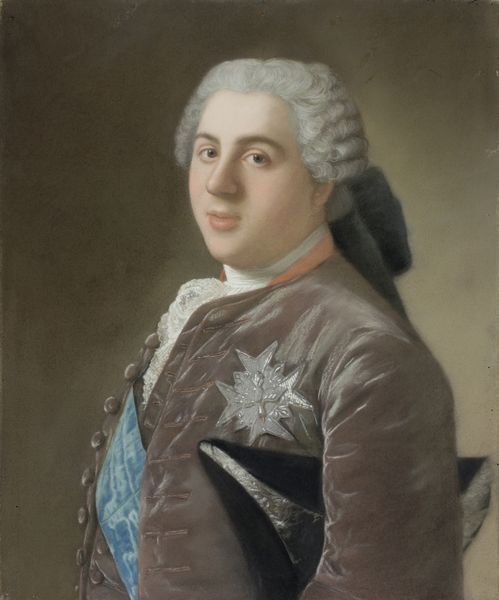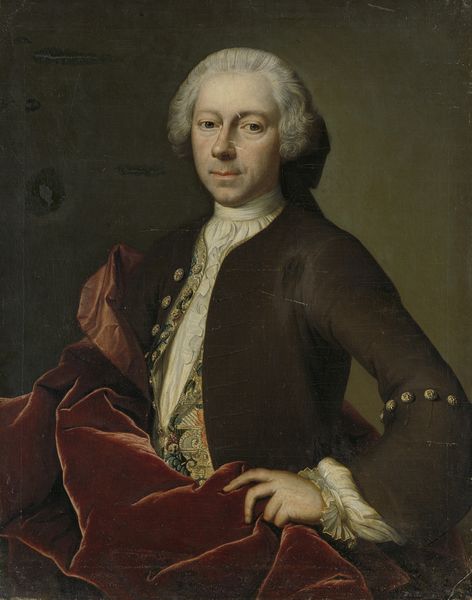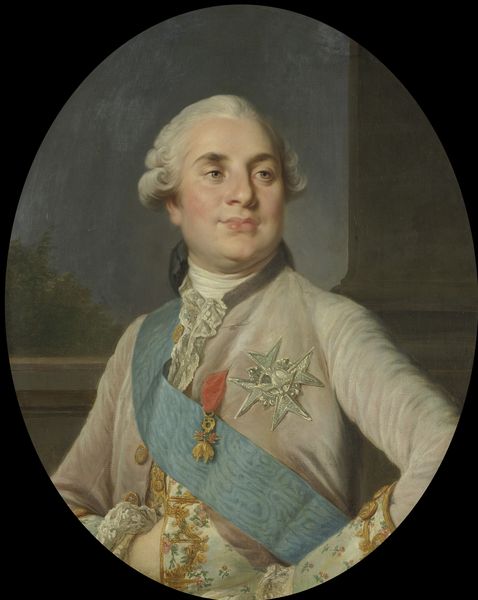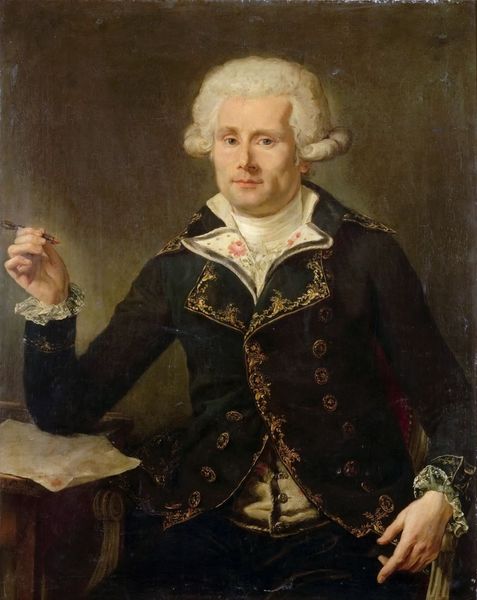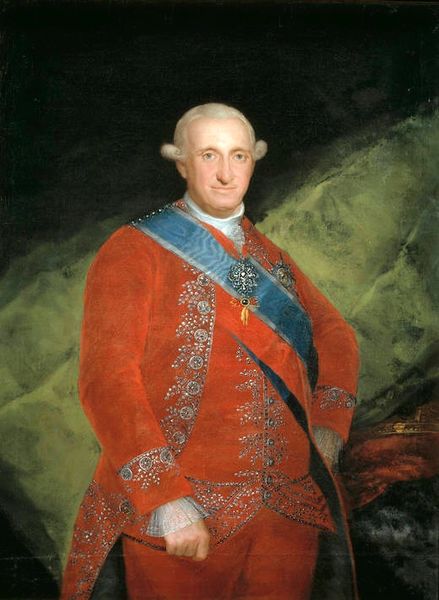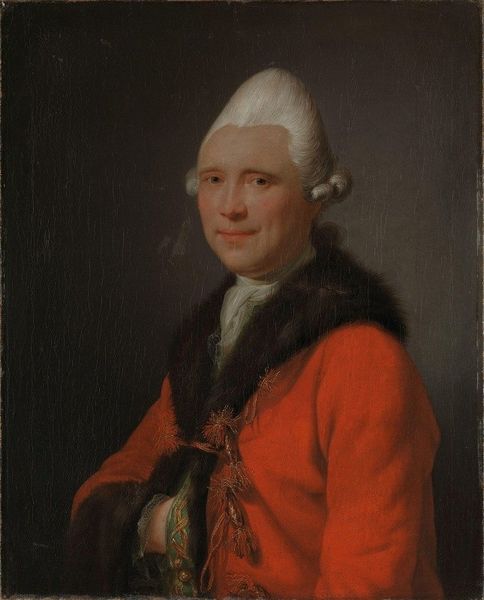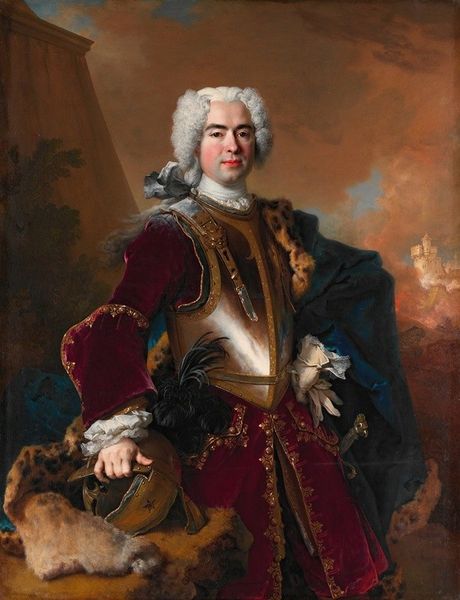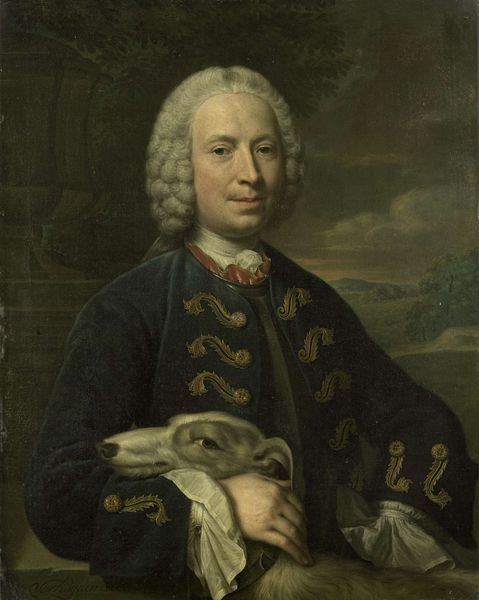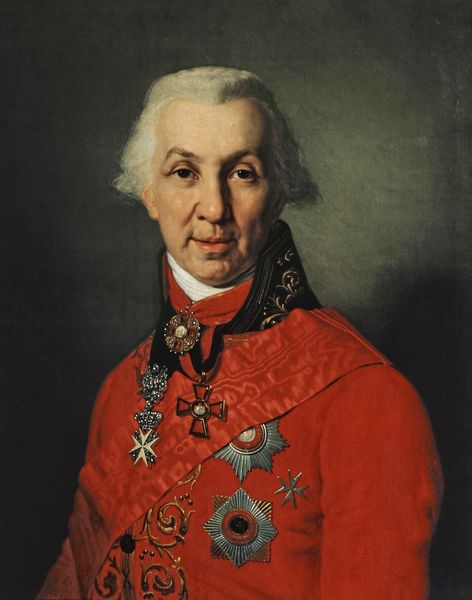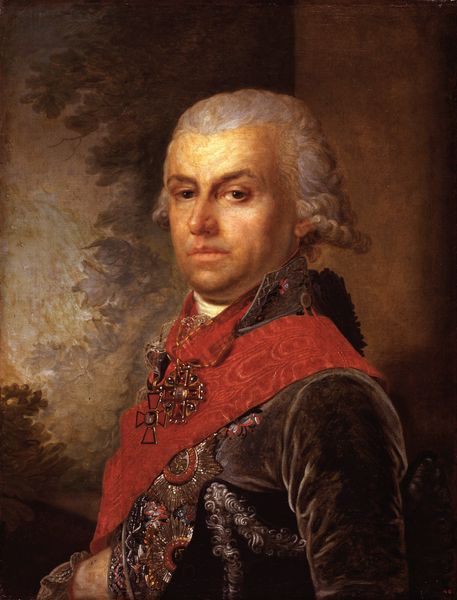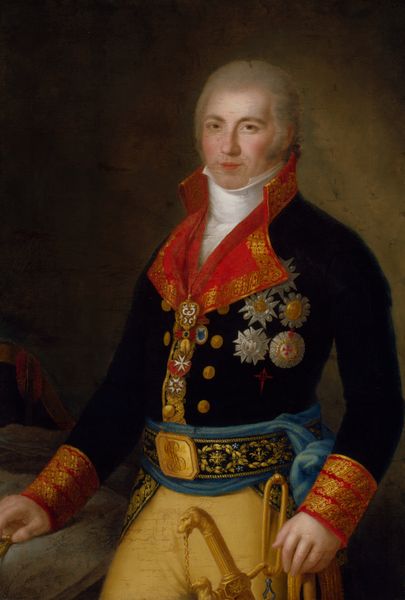
painting, oil-paint
#
portrait
#
figurative
#
neoclacissism
#
painting
#
oil-paint
#
history-painting
#
academic-art
Copyright: Public Domain: Artvee
Curator: The darkness and heavy drapery immediately establish a mood of importance, wouldn’t you agree? It seems like we are viewing a figure accustomed to privilege. Editor: Indeed. What we’re seeing is Goya's “Don Antonio Noriega,” an oil painting completed around 1801. Notice how Goya depicts Noriega seated, papers in hand, projecting an air of composed authority. This piece operates very much within the conventions of portraiture of its era. Curator: The symbols of power are palpable, especially the metallic glint of the medal and the stylized foliate details on the black and gold brocade. Even his hair is purposefully curled. These details create an overall impression of a man deeply enmeshed in the performance of his station. Do we know what station that would be? Editor: Goya was, during that period, first court painter. This portrait may well have been commissioned to celebrate or solidify Noriega’s social standing; however, little is documented about the sitter. We could, therefore, read this painting as commenting more broadly on the aspirations and visual vocabulary of the Spanish elite. Curator: Fascinating how even details like the green tablecloth, and the barely perceptible ornamentation on the chair become symbols in themselves. Every surface conspires to reinforce a particular image. How interesting, though, that Noriega doesn't look particularly thrilled. Do you think he feels burdened by it all? Editor: Goya's known for injecting elements of realism into even commissioned portraits. Noriega isn't idealized; he's given a palpable presence. I believe that ambiguity serves a public function. The painting walks the line of duty while offering an unspoken visual negotiation, both for the sitter and its viewers, on what it means to inhabit such a visible role. Curator: So, this image doesn’t just reflect, but perhaps subtly shapes ideas about power? Editor: Exactly. It's a push and pull. On the one hand, we observe a figure embedded in symbols. On the other, we sense a nuanced observation by Goya about how individuals exist within—or perhaps are constrained by—the apparatus of public identity. Curator: That tension is something that stays with me; a question that hangs in the air long after the viewing is over. Editor: Agreed. And perhaps the fact that so little is known about the sitter leaves more room to project ideas about class and the human experience onto him.
Comments
No comments
Be the first to comment and join the conversation on the ultimate creative platform.
